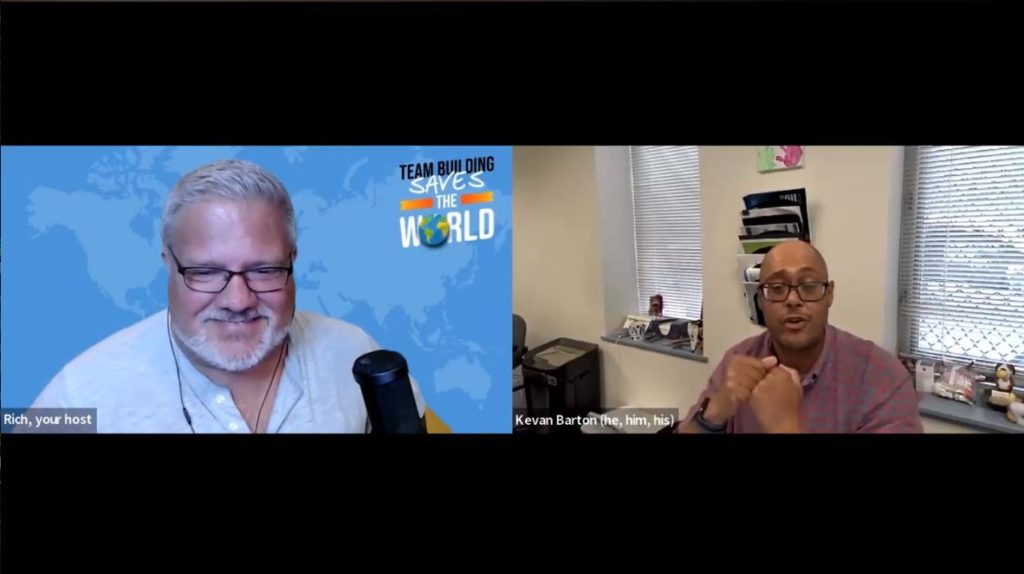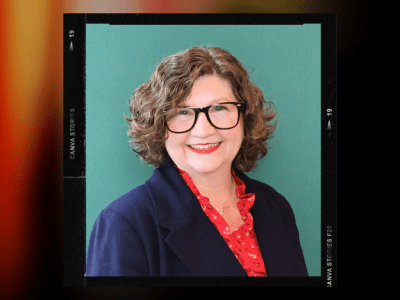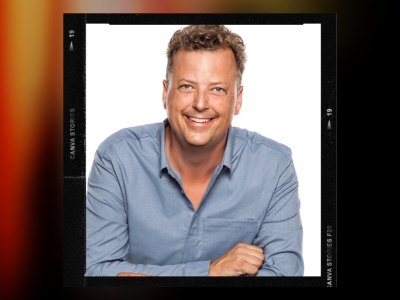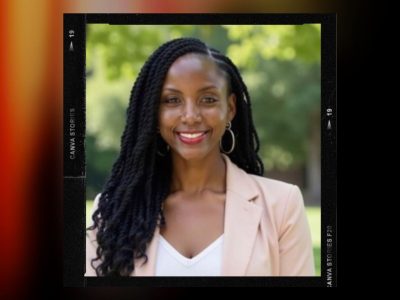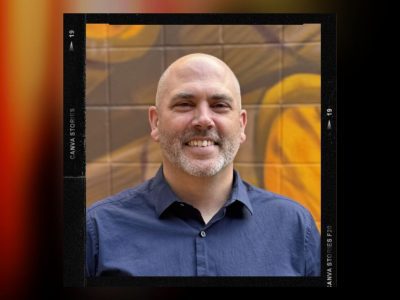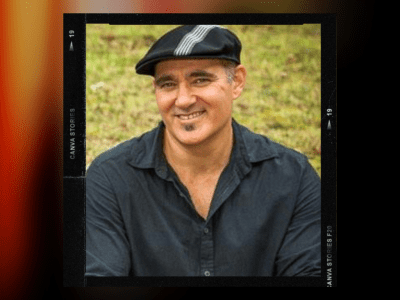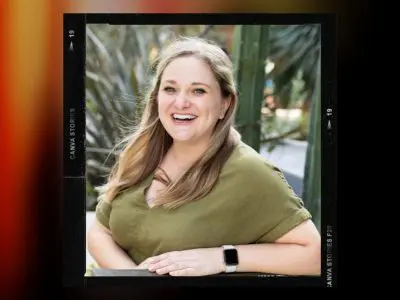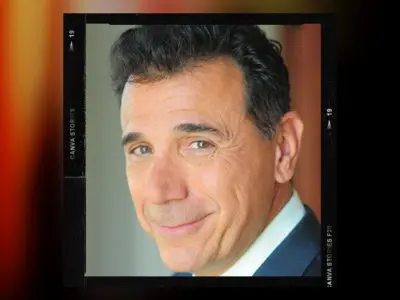Community Impacts of Corporate Giving
w/Kevan Barton
Use the buttons above to listen now.
Transcript - Community Impacts of Corporate Giving
Rich: On this episode of Team Building saves the world. Why should I go with corporate giving? What’s the benefit for me as somebody who works as a part of a corporation?
Kevan: Well, you know, honestly I think, I think it’s that understanding that it’s, it’s a win win.
Rich: Hello team. It’s me. Your old friend, Rich Rininsland of team building saves the world, the show where I speak to the leaders and innovators in employee wellness and corporate culture on how it reflects in the world of today. And today we’re looking at corporate giving. We’ll be looking at the ups and possible downs of working with a not for profit, with the Executive Director of Youth Connect, Kevan Barton.
But first, I need to share some love with my supporters at Team Bonding. If your team is ready to experience teamwork through the power of play, to visit team bonding.com to learn more now, team, join me welcoming my guest for today, Kevan Barton.
And Kevin, how are you my friend?
Kevan: I am doing well. Loving that applause, Rich.
Rich: It is just a small group of people. I keep chained up under my desk just to applaud you. Love it, . So, um, normally when I have guests on Kevan what we do is I will ask them what got, who they are and how they got involved. But first I wanna start off, let’s put the spotlight where it deserves to be.
Why don’t you tell us about Youth Connect.
Kevan: So what first can I actually just say thank you so much for having me. Oh, happy. Can I say how much I love the name? Team building Saves the world, , you know, Cause here’s the thing, when I hear it, uh, what I hear is it takes a village and we all have this responsibility to ensure that we take care of one another.
So my name is Kevan and I’m the executive director of Youth Connect. And Youth Connect is a violence prevention, uh, program of, uh, Boys and Girls Clubs in Boston. Uh, we started over about 26 years ago, and what we do is we play social workers in police stations throughout Boston to really provide community based mental health services and supports to young people and their families who are referred by the officers themselves.
Rich: Fantastic. How did you get started in not only this direction, but but the career? .
Kevan: Oh, wow. Uh, so I, I mean, honestly, I mean, social work is, is at the core of what I just believe in. You know, honestly, it is about sort of how can we really ensure that all people, all people in society have access to what they need to really thrive.
So for me, that is social work. And you know, when, when I started. Here at Youth Connect back in, well, 2002 originally, um, I was a frontline social worker and I was really drawn to this. Um, honestly what, I’ll be honest, I thought it was a crazy idea. I said, What are you talking about? Social workers and police officers working together.
Yeah, but that’s exactly what drew me this idea that you know, social workers and officers can come together and create stronger communities by providing young people with positive choices. And, you know, the truth is, growing up, I, I, I think like so many other young people, we, we had differing, you know, varying interactions with officers, right.
And what we understood officers to be. And I had never really heard of this concept of the two coming together. So, you know, for me it was really the sense of committing and breaking down these barriers, uh, truthfully.
Rich: And how many of, how many, uh, youth Connects are there throughout, like, say, throughout the country?
Kevan: Well, we are actually Boston based, so we Youth Connect is, is original. It is, it is currently only in Boston, but we place social workers in six neighborhood police, uh, stations and three citywide units to cover the entire city. So, uh, our presence is typically in the districts that, um, or, or areas that experience some of the most criminal activity.
Rich: So what’s the importance of giving with your organization? I mean, is it the only way that you actually get the connections and the items that you require or, uh, how does it work?
Kevan: You know, in order for us to really meet the needs of, um, well of over 530 young people. Mm-hmm. , um, this, this last year we served, uh, 537 youth and their 1400 family members.
And in order to do that, we have to raise, um, this year about 1.5 million. So the generosity of corporations are actually a part of this call action for us, right? Mm-hmm. . So every dollar, every resource counts. Uh, the cost of everything, as you know, I think is risen, um, in the city and in the country. And it means that there’s this really, this ever widening gap I think between those who have, and those who are stretched and unable to meet their basic needs.
So the giving that comes from corporations, for example. Yeah. Um, that honestly, that’s a commitment to ensuring access and equity to communities that they operate in.
Rich: Let’s step back just real quick second if you don’t mind, because you’re also, uh, affiliated with Boys and Girls Clubs. Um, how does that work and how is that a part of youth connect?
Kevan: Youth Connect is actually a part of Boys and Girls Clubs of Boston, which is made up of nine clubs and Youth Connect. Okay. So you know, the philosophy and the mission, if you will, of Boys and Girls Clubs of Boston is to serve the whole child and all children and at Youth Connect we’re really this integral part of this continuum of services and support to youth and families across the city of Boston.
Rich: I know for a fact that with us at Team Bonding, when we, we work together, we partner up with the Boys and Girls Club and with Youth Youth Connect. It’s mostly through our bike builds. Um, you know, those, that, those wonderful times where, uh, people are brought into a room and told that they have to build bikes and we have to make a game out of it.
And it’s usually not until they get towards the, toward the end of the event that they even find out where these bikes are going. Just so my audience out there knows where do these bikes go? How does this work for you on your side? ,
Kevan: can I, can I first just say, having had the opportunity to, but to attend some of these bike builds?
Mm-hmm. , I, I have to say that witnessing a number of folks in suits and ties and other business attire, building bikes, coming up with, PSAs about why their bike is the best bike ever for, for participating in the obstacle courses. Uh, it’s, it was, it was phenomenal to see, loved every minute, and, you know, for us, because of the, the bike build.
We were actually able to give 30, uh, 30 bikes, so actually over 30 bikes to children between the ages of five to 12. And it, you know, the, these children are often the siblings of the teens we work with in the community, uh, who have been referred by the officers. And so, you know, we, we honestly, we have this privilege of, of working with so many incredible families in Boston,
who are often really trying the best they can in a city where access to housing, food, clothing is often limited because of the, the cost. And so these extras, like bicycles, these become a privilege, right? Mm. But, but what’s amazing is it’s for the children who get these bikes, it’s that moment when the young person gets to just be that rich, right?
Just be a child and experience joy and levity, right? Like the levity that I saw in these moments where, you know, the, the folks were putting these bikes together, right? Um, it’s really that joy, you know? So that’s, that’s where they go, you know? And honestly, aside from the joy, the truth is, you know, being able to ride a bike, I mean, let’s be real, if I try and get on a bike right now mm-hmm.
I’ll probably be wobbly . So it’s true. It is true, but you know, you think about the confidence that comes when a child learns how to ride this bike. Yep. Right? That’s what you wanna see. And so that, that’s where these bikes are going. It’s going to the, the children of Boston.
Rich: I have to say, just for my audience out there and, and I’m sure you’ve seen it too, we were fortunate enough, at least pre pandemic, That we would get the kids who would come to pick the bikes up, usually along with the organization.
So some, so like someone like Kevan would come and describe what the organization actually is, who they work with, what they do. And then these kids would get to, actually, you would see the children actually choosing the bikes and the, the way that their eyes just lit up. It was, it’s powerful. It’s a very powerful effect.
It’s a little harder now post pandemic because we, we can’t really, I can say post pandemic because the president said so, um, sorry, . Um, so how else have things changed with charitable giving with the pandemic?
Kevan: Well, you know, I think. One of the things we noticed, I guess at the, the, the onset of the pandemic, right?
Mm-hmm. , if you will. Yeah. You know, a lot of the giving definitely, it’s, it didn’t necessarily decrease for us, right? It’s, it’s that the kinds of giving changed, right? So the focus of the giving for us and what we ended up seeing was certainly a lot um, A lot of giving that was related of course, to, uh, ppe, right?
Making sure that folks were safe, had the masks they needed, the sanitizers they needed. Excellent. Um, also, uh, a lot of giving of gift cards, right? Because one of the things that we saw for our population in particular, right, because we were talking about, you know, youth Connect, most of the families that we do work with are, um, really struggling to make some basic needs and, um, You know, or, or at times chronic poverty.
And so, you know, gift cards to be able to access food was really important, particularly as folks were beginning to lose their jobs. Yeah. Right. Um, and then for a while there, you know, it was even hard to find some of the food, right? Mm-hmm. . So we had to really then think about, okay, well how do we get donations that allow us to actually give physical food to.
Right. So we definitely saw that, um, you know, one of the, the, the things though, another upside though to the giving that I saw. Was that a lot more dollars were coming in that became less and less restricted. Right.
Rich: How do you mean?
Kevan: So, So, you know when, when a donation is given. Mm-hmm. Right? A monetary donation, let’s say.
Right. Okay. If there is restriction on it, it can only be used for certain things. One of the things that I’ve, I’ve, that has been really helpful has been the ability to receive more dollars from corporations, from individuals, that it’s really these unrestricted dollars that say use this funding in the way that is going to best meet, meet the need of the families I should work with. Right. And, and that was, that was incredible as well. So that’s some of the things that we saw.
Rich: Well, take us a little deeper. Uh, what does the day to day look like for something like Youth Connect or the, the Boys and Girls Clubs?
Kevan: Sure. So, you know, for, for Youth Connect, you know, when, when we receive a referral, uh, from an officer, honestly it starts with a cold call.
You know, a social worker, one of my social workers will call a family and basically explain who they are, that their social worker works out of the police station, and that an officer was really worried about their, their child, their, their young person who maybe, maybe was arrested. You know, maybe they were
hanging on, you know, hanging out with some peers and an officer saw them and, and said, Hey, I’m really worried about this, this little one, this, this young person, this teen, right? And, and so oftentimes when we then call a family, you know, you’re really trying to engage this family to really help you understand what, what’s been going on here, right?
What’s been tried? Mm-hmm. , what, what, what have you been connected to? Who else is involved with your family? Right? That can really help to create this village, right? If you um, and I spoke about a village earlier, Right. You know, But it is about creating this village that’s really gonna help a young person thrive.
So for us, that might mean that a social worker is engaging them in individual therapy. Mm. Right. Maybe they are connecting them to other resources in the community, or maybe they’re connecting with other providers, Right. That are involved with this young person, because we know young people don’t grow up in a vacuum.
Right, Right, right. They grow up in the context of communities and families and school systems, and so a lot of what our social workers will do is really be that squeaky wheel, if you will. We’re really good at that rich and, and really helping people to understand when a young person’s needs are perhaps not being met and really making sure that that those underlying issues that might lead to a young person getting arrested.
We’re really addressing those, let’s get to the root of what’s going on here. Okay, So young people have an opportunity to really, um, uh, thrive. You know, have some, some, some positives, some successes.
Rich: What about for something like, uh, like a bike build? How does that function? Like where, where do they go? How do you make sure that the people who needed the most get them, things like that.
Kevan: Yeah. So with the bike build, what we do is, you know, we will have our social workers who are really identifying families where this, you know, maybe they’ve talked with a family and there’s a, a smaller sibling, you know, Cause typically for the bikes you’re talking about anywhere from about five to about 12 in terms of the right, you know, the, the age for these bikes.
Right. And, and so a social worker’s identifying a family and they reach out to the family and say, hey we have, you know, this really generous donation from such and such company and, you know, are, are you interested in a bicycle? And typically, you know, family, if they have a, if they feel that they have a need, sometimes they don’t know how to ride a bike, but okay, let’s, let’s teach them, you know, uh, if you’ll be surprised if social worker might be riding along, you walking alongside the, the child, you know, telling them how to ride.
Um, ideally, And, uh, and, and so families will then say yes, and a social worker will actually take the bike, physically take the bike and get it over to the family and Rich can I tell you there, there was one story. I have to share this.
Rich: Go please.
Kevan: The little boy. The little boy, uh, got the bike. Social worker, uh, you know, showed up with the bike.
Got it. Little boy gets on the bike start. He must have been around, I’d say about six maybe. He starts writing the bike and as he’s riding the bike, cause he already knew how he’s riding and he screams back. This is the best day ever. And that was, To me that is exactly what we were hoping to hear. Right.
Rich: That’s fabulous. So that is fabulous.
Kevan: This is more than just a bike rich.
Rich: Yeah, yeah. I, yeah, I try to explain that to a lot of my corporate clients. I mean, I try to reminisce with them and, and really this is something for someone who’s a little older like myself, where we grew up in the age of you ate breakfast, your mother kicked you out of the house and told you don’t come back until the street lights come on.
Yep. And if you didn’t have a bike that meant you were limited to your yard, maybe a neighbor up one way or the other. But once that bike hits at the level of freedom that these kids are given, who may not even have really understood what the concept of that word was. Yeah, is it’s, it’s spell binding to watch these kids when they finally see what’s going to be theirs.
Kevan: Absolutely.
Rich: But Kevan speaking of which if you don’t mind, I do need to step away for a quick second and talk about a company I am very proud to be a part of, and that’s Team Bonding. Team Bonding was founded over 20 years ago with one simple question, How can employees have a great time while fostering strong authentic bonds between people who work together?
They’ve created a catalog of innovative events using the power of play as a learning tool and tapping into the correlation of work and play. From scavenger hunts to jeopardy and so much more the team bonding of activities be they live virtual or hybrid maximizes the impact of team building with an accent on fun.
So visit team bonding.com to schedule your event. Team bonding when you want seriously fun results. And we’re back with Kevan Barton. Kevan, uh, let’s look at the corporate side now. Um, I’m a CEO or I’m the head of an HR unit or whatever it happens to be. I’m the person who knows that I need to get my team, some, some bonding going on.
I need to make sure that that a team, good team building activity is going to happen for my people. Why should I go with corporate giving? What’s the benefit for me as somebody who works as a part of a corporation?
Kevan: Well, you know, honestly I think, I think it’s that understanding that it’s, it’s a win-win.
Rich: How so?
Kevan: Because when a corporation gives to a nonprofit, right, it’s with the understanding that those dollars are really meant to strengthen the community. Right? Okay. And so corporations operate within communities. Right.
Rich: Very true.
Kevan: And you know, part of what the dollar does or what the $2 or the, you know, whatever the amount is, it really helps to fortify and strengthen that community.
Right. Because it’s about making sure that there is access. Right. So depending on what your corporation is, Right. Some of the constituents might be shoppers. Right? Okay. Might be folks who are receiving services from, or. Providing services too, right? And so the more that you do that and fortify you ensure then that you have a stronger company, right?
Because you have a stronger constituent base. So I think of it as a win-win, right? It’s about access and equity.
Rich: Do you find that you get, um, more of your, your support from corporations or from individual.
Kevan: I would say for Youth Connect, it is currently, uh, I’m gonna say it this way, Currently it is individuals.
Hmm. However, I would love to see it increase with corporations.
Rich: Absolutely.
Kevan: Fair enough?
Rich: Yeah. That’s more than fair. That’s a fantastic answer. Especially with the holidays coming up. I mean, yes. Are there specific times of the year where it’s better to consider giving for these kids or for even? Even just for your foundation?
Kevan: Yeah, so like for, for our, our program in general, giving in, in all sorts of ways, right? Because there’s, there’s monetary supports, there are resource supports, right? Like the bicycles, sometimes it might be gift cards, sometimes it might be clothing, you know, whatever it might be. We typically see an increase during the holidays.
Rich: Right. Okay.
Kevan: Particularly November or December. Right. Those are, those are sort of the two big times. And then there’s also a big push towards the end of June as well. Hmm. Um, for us at Youth Connect. Anytime is a fine time, uh, you know, but, but certainly the, I will never Rich never say no. Sure, uh, to the, uh, to the support at any, any time of the year.
However, during the holidays we connect and at Boys and Girls Clubs of Boston, we do a big push. Um, you know, because this is about, again, the holidays. It’s about the joy, right? It’s about those opportunities to make sure that young people are experiencing the joy that we, we really wanna see for everyone, right?
For all absolutely. Young people. Absolutely. If you, if you think about the messaging, right, that happens during the holidays and giving right the sense that you who matter. Right. You’re seen and you matter.
Rich: Yep.
Kevan: Um, that’s the bigger message. Right. So, uh, I, I love, I love seeing the donations and stuff come in around the holidays just cause I know what that means for the families.
Rich: But since you already say that, you’ve always see that natural influx during the holidays, would you, is there another time of year you would rather see an upswing? So maybe our company can actually say to a client who’s looking for something, you know, they really need help. Mm-hmm. , what would be a good time of year for.
Kevan: Um, there’s definitely there. So as we get closer to the, uh, summertime, there is often a, a push that happens for us around summer camps, right. In making sure that young people are ready for summer camps, right. And so there, there’s often that time in that, I would say probably March through May when it’s, it’s wonderful to start receiving some of the
the pledges of support, Right? If you will, because I know then that as we go into summer camp time, we will have the things that families will have the things that they need, right? Mm-hmm. , some of it might quite simply be, you know, you, you’ve got young people, maybe they’re going to camp and they need some of the items that they need for camp, right?
You know, to go with your, your bags and you gotta go with your sunscreens and your water bottles and all of that stuff, which is costly. And then also the, the summer camp tuition. Yeah. Truthfully, you know, we have a lot of families who, who, who need support there. So I would say that time and then also the back to school time.
Mm-hmm. back to school is another big push for us as well.
Rich: Have you ever taken part in one of our back to school programs?
Kevan: I have not. No. For um,
Rich: now we’re gonna change. That we’re gonna change, We have a fan, we have a fantastic charitable back to school that we gotta get you involved.
Kevan: Excellent. Love it.
Yeah. No, I’ve only done the bike builds.
Rich: We have. Oh, we have some. Well, what other things do you do though to, to drum up your own charitable support or your own give.
Kevan: Yeah. So we will often do a, of course, an appeal, right? So you do an appeal to, to try to get, um, you know, donations in that’ll help us to get the things we need, right?
Oftentimes, you know, we may, uh, approach different, uh, funders. You know, if you will, around things like emergency funds for items that families might need. Uh, and then we have really intentional partnerships. Rich, you know, I think, um, at, at, uh, Youth Connect, you know, and overall Boys and Girls Clubs of Boston, we, we really are intentional about our partnerships and really making sure that we’re partnering with folks who can really help to, to bring in some of those,
those things that we might need, like back to school supplies, holiday gifts, um, you know, uh, Thanksgiving meals, if you will, as, as well. So, so yeah. So those are the efforts that we do.
Rich: Do, do organizations reach out to you and your, your not-for-profit, um, on their own? Or does it usually take a party like us?
Kevan: Uh, Combination. Combination. So, because, you know, I mean, we’ve been around for, you know, quite some time. Mm-hmm. and, and certainly Boys and girls clubs of Boston, What, 130 years coming. Right. So, so there are many organizations or, or corporations that may you know, reach out. But we’re always seeking new partners, always.
So, you know, when team bonding reached out, it was, it was fantastic. It was like, Wonderful. Would love to do this. Um, and so I know I thoroughly enjoyed being able to go out and speak to the, the different corporations when they do invite me in. So,
Rich: Okay, so I, let’s, let’s get back to sharing a little bit more, if you don’t mind, Kevin.
Kevan: Sure.
Rich: Let me know when you actually have these moments, uh, of sharing from the giving that has come from either corporation or even an individual. What’s the profundity like? I mean, how profound is that instant of seeing a family in need, get what they require.
Kevan: Rich. I, I, I don’t even know how to begin to explain.
Rich: Yeah, I’m sure there’s no scale for it, but
Kevan: No, no, no. And you know, I’m not sure if you’re asking me just to, to be clear in terms of what we see in terms of impact or just, you know, sort of some of my memorable moments.
Rich: Give me the impact first and then let’s specify into some moments that would be.
Kevan: Yeah.
You know, so one of the things I, I know I, I recently shared, um, when I went out to one of the corporations who, who donated, uh, the last set of bicycles, um, I did share some of these statistics with them, these outcomes, if you will, because I, I think they, they, they paint the picture. You know, many of the families that we work with are, um, often struggling with a number of challenges, some of that being chronic poverty.
Yeah. Uh, some of that being, you know, um, Uh, limited, uh, educational achievement, um, some substance use, you know, when you think about families and, and constellations of families. Right. And, you know, one of the things I am extremely proud of is, is knowing that when we work with a family, We’re in it for the long haul for one.
Yep. Which is phenomenal. Um, we are a voluntary and free service, so we’re not bound by limits of, of, um, managed care and insurance. Right. So we can work with a family for as long as it takes on their timeline. And so what that means then is that you get these, these outcomes. So last year, You know, we actually saw 60% of our clients actually experiencing better mental health outcomes.
Rich: 60%. Really?
Kevan: 60% right. Now, keep in mind that you’re talking about levels of progress, right? Sure, sure. And so, um, It might be that maybe, maybe somebody was really experiencing some significant mental health challenges, depression, anxiety, and you know, you finally got them to a place where they were willing to even engage in therapy, right?
Or to go see their doctor to finally get some relief around this, right? Mm-hmm, so it doesn’t impact their functioning on the day to day. That’s huge. Because we know that there are so many, uh, well, there’s, there’s a lot of stigma, right? Sure. That comes sometimes with mental health. Yeah. Um, you know, in accessing mental health resources.
So for us, 60%, 45%, were able to actually feel and be safer in their community. Because we get a number of young people who are not safe in the community, right? Due to a number of, of, of different challenges in community violence. And so for us to experience almost 45% of our young people being in a safer place.
This summer alone, we were able to relocate four families, Rich, who were experiencing significant safety concerns. Right. That’s fantastic. They finally just breathe. That’s fantastic. And and 58% increases their support systems, right? Again, that goes back to the village. Yep. Right. Moving the habit of helping people connect so that I give you as sort of the statistics.
Right.
Rich: Excellent. Yes. Now, um, can you gimme like a personal example for you? Uh, you don’t have to use names. Of course. We want to,
Kevan: we wanna, can’t use names, right? All right, But we can use Rich just, just ,
Rich: Well, you can use mine all you like Kevan, but , uh, but can you gimme an example of like a really profound moment for you?
Kevan: Yeah, sure. Um, you know, I’ll give you a, certainly a personal one from my own experience, you know, as the executive director now, I don’t really have as many clients. I’m, I’m gonna go way back to when I had a client. And, and, and, and so, you know, there are so many examples and, and certainly of the team around me, but one of the most memorable for me, without a doubt
was a young man that I worked with, who, well, let’s say he was 16 when I, when I started reaching out to him, he had been referred by the police because, uh, he had gotten arrested for drugs, uh, possession and breaking and entering into a car. and for a year, Rich. Yeah. I called this young man because one of the, the, the, the really, um, uh, successful pieces of our work at Youth Connect is that, you know, we’ve always provided Telemental Health.
You know, it was just via phone if it wasn’t in person. Right. We’ve now added, you know, Zoom. Sure. And, you know, you know, more video. Yeah. But I talked with this young man on the phone for almost a year, right. Every week would call him. How you doing? How’s it going? How’s life? How are the friends? How’s the family?
Just building this relationship. And he kept saying, he kept saying, So, can we meet each other? Can we actually meet? He said, Sure, Kevan. Sure Kevan and every week I would show up at his school. Only he’d forget to tell me he had no intention of showing up at school to meet me . Oh man. And it got to the point, school police officer,
he said, Kevin, you know he’s not here. And I said, I understand that, but I am. I’m showing up. Yep. So I would call him and say, Hey kiddo, what happened? I was at school, Oh, I’m sorry, Kevan. I overslept. Mm-hmm. . Okay. Well, year after, uh, I called him one day, Rich and um, and I said, Hey, how’s it going? And he got really quiet and he said, Not so good.
I said, What happened? He said, Well, my, my friend was, was killed last night. . And I have to tell you, Rich, I was heartbreaking. Okay. This, this kid who now, by that time was almost 17, letting me know that his best friend, um, didn’t make it, uh, due to an active community violence. And, you know, this was a sad reality for this young man, but so many of his peers.
And it was at that moment I said, Will you meet me? And he said yes. 30 minutes later he showed up. Not at the police station where I was stationed, cuz that wasn’t gonna happen. Yeah, sure. But he did show up because of our nontraditional approach. I, I was able to meet him at a, um, at a train station nearby my office.
Hmm. And he showed up. . And for three years after that, Rich, I provided him with individual therapy.
Rich: Fantastic.
Kevan: And happy to say, in the time that we were working together, he did not get arrested again. He decreased the drug use and um, he just, he was finally smiling again. So I, I’m sharing that with you because the beauty of being able to provide free access to mental health care, Right.
Because of the generosity of corporations, foundations, individuals, means that I got to build a relationship with this young man for a year without having to worry that I would be told You can’t bill for that, right?
Rich: Yeah.
Kevan: And so that’s the power I think, of what we do at Youth Connect. That’s just my story with this young man who I absolutely adored.
Rich: That is a fantastic.
Kevan: There are so many with my team, I’m sure. And we have 8, 8, 8. Uh, Social workers on the front lines in police stations, right? Currently, right now, we have one, one position open. Mm. Um, but we offer these services in a way that honors the family’s timeline, the client’s timeline, not deadlines that are set by others.
Right? Uh, the power of the relationship lies in the ability for that young man at that moment to say yes. If
Rich: somebody is out there and they’re listening right now, especially somebody who might be part of corporation who is listening. Yeah. How do you recommend they go about giving? What do you need the most from them and how best can you get it from them or get have them get it to you?
Kevan: Well, honestly, um, you know, Rich, I don’t know in your, your podcast how you, how you put out my information, but I have a phone number and I have an email address . Um, all right. But the truth is I invite anyone to reach out, uh, to us here at Youth Connect. I am always happy to talk with anybody who is really interested in learning how to support our program, and most importantly, it’s really about support.
The clients and their families.
Rich: Right, right, right.
Kevan: Um, you know, we’re at, uh, you know, www.bgb.org/youth connect. And, uh, I, I hope, and you know that folks do pick up the phone, do find out how to connect with us. It’s as simple as a phone call email.
Rich: We will be sure to share that information and all of our links.
Uh, so that they can, as quickly as they can, Cause this is a vital need and everybody who thinks that they cannot make a difference. You, you absolutely can. Every little bit does make a world of difference for somebody out there in need.
Kevan: Absolutely, absolutely.
Rich: Kevan what what do you hope for the future for Youth, For Youth Connect?
I mean, what’s, what’s your company’s end goal?
Kevan: Well, you know, the truth is, ah, we can continue to increase our capacity to serve even more young people. Okay, Rich. You know, like I said, we’re, we’re in six neighborhood districts we’re in three citywide. Well, there are many more districts in Boston and there’s an entire nation.
And so, you know, but the thing is that it’s gonna take an investment from those who see an opportunity to make a difference in the lives of a group of young people who often don’t get the attention they deserve, but are absolutely our future. So if we. An amazing future. We’ve gotta invest today. So we have, uh, an amazing opportunity here.
Rich: So brilliant. Thank you my friend. Thank you so much for coming on board my team out there. Please one more time, give a big round of applause for Kevan Barton. Everybody at Youth connect for all that they do.
This is not our usual kind of podcast, but it’s definitely vitally important and maybe people now begin to understand why when they called my offices and they’re like, We have this, We, we have an afternoon where we want to keep everybody entertained and happy. And we say, How about you give bikes or you give backpacks full of school supplies or now camp supplies and we can give back to the community that you are helping to support.
Thank you. Thank you. And. I hope you’re ready, my friend, cuz we’re gonna have a little fun.
Kevan: Uh, all right.
Rich: I was telling you in the very beginning, we, we do have a little fun game at the end, so let’s lighten the mood. Just a touch cause it’s time for my speed round.
I said I wanted like a morning cartoon or, or drive time, like, uh, And that’s what I came up with. All right. All right, Kevan. Here’s how this is gonna work. I am for 60 seconds gonna ask you just a series of completely innocuous questions. You’ll hear music that is just to help me keep in mind how much time is going by, and your job is to try to answer these questions as quickly as possible.
Now, I don’t know if you feel competitive at all, but the number to beat is 14.
Kevan: What? Yeah. Okay.
Rich: Yeah, here we go.
Kevan: Okay. I’m gonna try my best.
Rich: Fantastic. That’s all you can do. All right, my friend. As soon as we hear the music, I will ask the first question and away we go. What’s your name?
Kevan.
How many kids do you have?
Kevan: One.
Rich: How many pets?
Kevan: One.
Rich: If your pet could answer a question, what question would you like it to answer?
Kevan: I don’t know.
Rich: That’s okay. Um, what is the sound you love the most?
Kevan: The sound of my child laughing.
Rich: Nice. What is the one food you could never bring yourself to eat?
Kevan: Oh, anything seafood.
Rich: Tell me something you remember from kindergarten.
Kevan: Clearly not a lot. ,
Rich: what’s your favorite smell in the world?
Kevan: Um, honestly, Laundry. Okay. The fresh laundry.
Rich: What’s your favorite movie quote?
Kevan: Uh oh, Captain. My captain.
Rich: Nice sheets tucked in or tucked out.
Kevan: Oh, tucked out for sure.
Rich: Do you count your steps when you walk?
Kevan: Yes I do.
Rich: I’ll give it to you. 11 my friend. 11.
Kevan: 11. 11 I did!
Rich: You did? That’s very good. We call that a gentleman’s 11 .
Kevan: Oh God.
Rich: Anything that’s over 10 is pretty good. Um, again, Kevan, thank you so much for coming on board and to all my team out there, please go to their website. We will have it listed everywhere we put this out, the uh, podcast. So that you will be able to look at what Kevan does here for his community and how you can possibly go and support them.
But my friend, until I see you next time, thank you so much for coming on board. You were great.
Kevan: Thank you so much for having me I much appreciate it.
Rich: And for you out there, my team. Thank you cuz that’s it. We have wrapped up another episode of Team Building Saves the World. If you’ve enjoyed this episode, whether you’re new to the podcast or an old friend of the show, please share it with everyone you know, whether they’re a coworker, friend, family, it helps us to share all of this vital information You can find out all about us, including all past episodes@teambonding.com slash podcast.
You can also find us wherever you find your favorite podcasts. Google Podcast, Apple Podcast, Spotify. Wherever you gotta listen, we will be there because if we’re not there, I want to know. So go on all those social medias. Go to see, see us at Teen Bond podcast and tell us where aren’t we listening or where aren’t we playing that you listen because I want to be where you are and why you’re on the social medias.
Tell us what you liked about the episode, or write down a future topic for the episode. We want to hear from you. This is how you become. Of the team. All right, my friends, before we say this, our final farewell for this episode of Team Building Saves the World. Please never forget if you are within the sound of my voice.
You’re on my team now, and I am forever going to be on yours. So long team, I’ll see you next time.
It’s been said that you learn more about a person in an hour of play than in a year of conversation, so why not put your coworkers to play with the help of the team at Team Bonding? Team Bonding was founded over 20 years ago with one simple question, How can employees have a great time while fostering strong authentic bonds between people who work together?
Their catalog of innovative events include scavenger hunts, jeopardy, and much more. Each activity, whether. Virtual or hybrid maximizes the impact of team building with an accent on fun. Visit team bonding.com to schedule your event now. Team bonding when you want. Seriously, fun results.
October 11, 2022
Many discussions and team events revolve around the benefits of corporate giving, but not all get to see the true impact of their efforts.
In this episode of Team Building Saves the World, Rich speaks with Kevan Barton, the Executive Director of YouthConnect to talk about the impact corporate giving has on their organization, why it is important, and how companies can get more involved with corporate social responsibility.
CSR is equally essential for the community as it is for the business. In today’s business climate, it’s not enough for companies to only focus on the business or product they provide. Customers and employees alike expect companies they do business with to use their resources to influence in some manner a positive change in their community.
About Kevan Barton: Kevan is the Executive Director of YouthConnect. Barton began his work with YouthConnect in 2002 as a clinical social worker in South Boston, then moving to the Roxbury district, the Youth Violence Strike Force and School Police Units and Senior Social Worker. In his most recent role after returning to YouthConnect in 2015, Kevan served as Director of Operations.
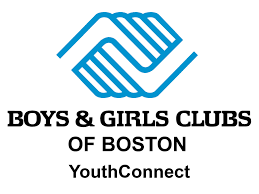
" Understanding that it's a win-win. Because when a corporation gives to a nonprofit, it's with the understanding that those dollars are really meant to strengthen the community. Corporations operate within communities, [and part] of what that dollar does is [that] it really helps to fortify and strengthen that community."- Kevan Barton
Get more human resources and leadership advice.
Less drama? Greater teamwork and job satisfaction? TeamBonding is here to help you build a stronger and happier team. Subscribe to get our team building podcast and thought leadership blogs sent straight to your inbox.

